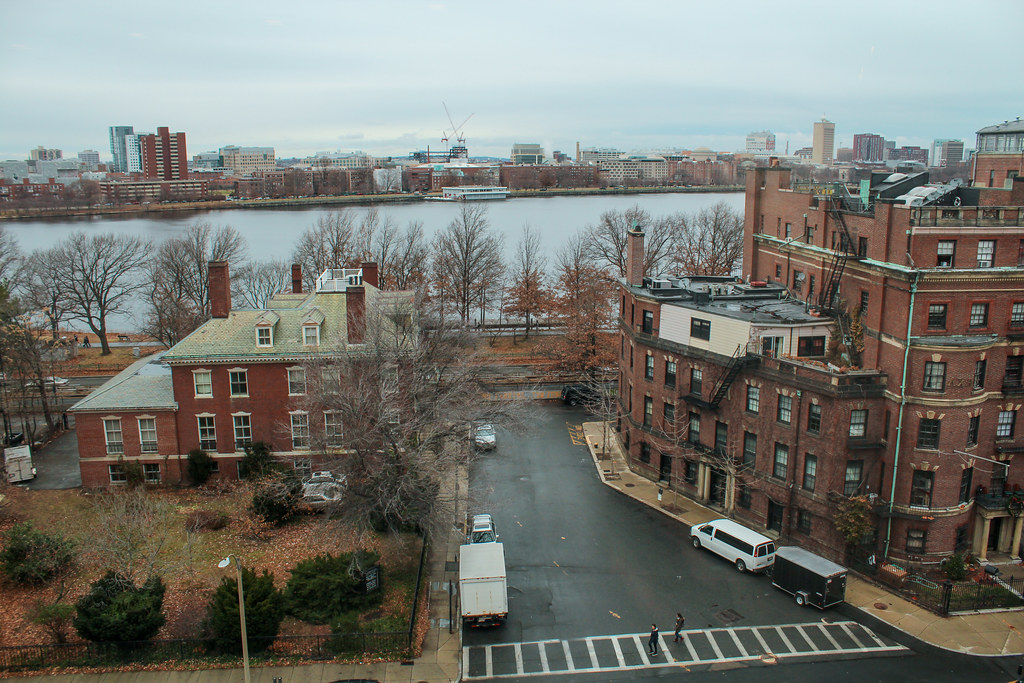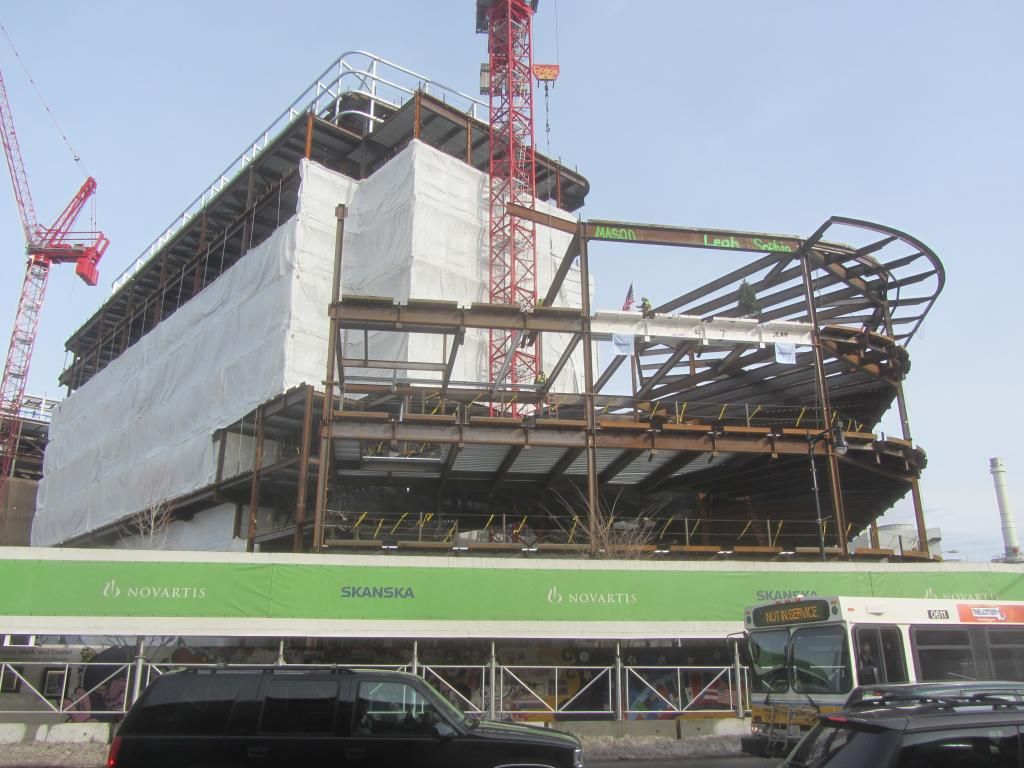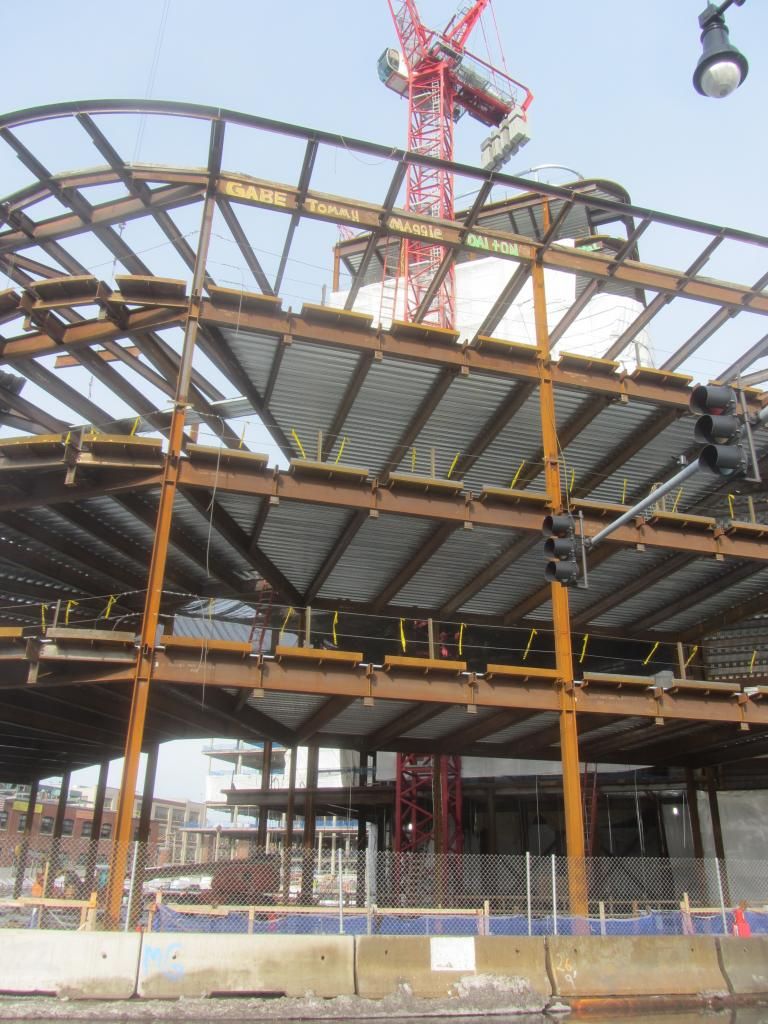You are using an out of date browser. It may not display this or other websites correctly.
You should upgrade or use an alternative browser.
You should upgrade or use an alternative browser.
Novartis Campus | 181-211 Mass Ave, 22 Windsor Street | Kendall Square | Cambridge
- Thread starter stellarfun
- Start date
- Joined
- Jan 7, 2012
- Messages
- 14,072
- Reaction score
- 22,823
fattony
Senior Member
- Joined
- Jan 28, 2013
- Messages
- 2,099
- Reaction score
- 482
I've been concerned as well that the shorter Mass Ave portion of this is not being built along with the taller parts. Hopefully it is just a matter of construction logistics and the low-rise extension will be added quickly at the end. If something goes wrong and we are left with a gaping hole in the Mass Ave street wall I'll be pissed.
EDIT: Looking at that last picture again, it looks like they might have started the low-rise already.
EDIT: Looking at that last picture again, it looks like they might have started the low-rise already.
tmac9wr
Senior Member
- Joined
- Jun 14, 2006
- Messages
- 1,446
- Reaction score
- 68
You know what, I'm 100% wrong...I thought there was a third multi-story building to be built. They've definitely already begun the low-rise portion of it, but I thought there was a third big building too. Just checked the renderings and this is the whole thing.
They started the low rise portion late in November. Steel is up to the third level near the 'high rise' portion as of this morning (I walked by twice).
The two level bridge between the front and rear buildings is up as well. The back tower crane will be coming down in the next week or two.
The two level bridge between the front and rear buildings is up as well. The back tower crane will be coming down in the next week or two.
kz1000ps
Senior Member
- Joined
- May 28, 2006
- Messages
- 8,983
- Reaction score
- 11,836
You know what, I'm 100% wrong...I thought there was a third multi-story building to be built. They've definitely already begun the low-rise portion of it, but I thought there was a third big building too. Just checked the renderings and this is the whole thing.
You know, for the longest time I thought there was a third building as well. They included the existing little brick building to the north in all the drawings and renderings to such an extent that I assumed it must be new too.
- Joined
- Jan 7, 2012
- Messages
- 14,072
- Reaction score
- 22,823
bigboybuilder
New member
- Joined
- Jan 29, 2007
- Messages
- 34
- Reaction score
- 0
"Topping Off" is scheduled for Friday the white painted beams are across the street for the Novartis employees to sign them.
1 point of clarification it is a one level bridge between the 6th floors
1 point of clarification it is a one level bridge between the 6th floors
paperless paul
Active Member
- Joined
- Nov 1, 2013
- Messages
- 214
- Reaction score
- 3
Boston02124
Senior Member
- Joined
- Sep 6, 2007
- Messages
- 6,893
- Reaction score
- 6,639
whighlander
Senior Member
- Joined
- Aug 14, 2006
- Messages
- 7,812
- Reaction score
- 647
Fabulous view of the "Barta Building" in the foreground -- the once home of 'Whirlwind" the world's first "Personal Computer" --
Excerpts from " The Bright Boys" -- http://www.brightboys.org/index5.html
211 Massachusetts Avenue, an ornate, hundred-year-old, brick building that when first erected in 1904 was known as the E&R Laundry Company, and then, much later, called the Barta Building, after a publisher by the same name.
On the Cambridge side, a stone’s throw from the front entrance of MIT, is 211 Massachusetts Avenue, an ornate, hundred-year-old, brick building that when first erected in 1904 was known as the E&R Laundry Company, and then, much later, called the Barta Building, after a publisher by the same name.
From the bare floor of that vacant factory the bright boys launched the country on one of the greatest and most successful projects in the history of American engineer-ing. No similar enterprise had ever or has since sprung from such humble surroundings.
If they had brought forth only the first real-time digital computer, the first digital network, and the first practical application of information theory, as they did, and pro-duced nothing thereafter, their adventure would have been a colossal triumph. However, their string of startling successes rambled on. They were the first to develop an electronic digital computer capable of controlling other machines and processes, a distinctly radical departure from the handful of other electronic computers of the day that calculated numbers only and then regurgitated an answer.
They pioneered the highly complex and very chancy process of engineering multiple electronic systems together into a single system...systems engineering. They were the first to institutionalize quality control from R&D to prototyping to manufacturing and on into management.
They originated modular construction of computers. They invented the modem and taught AT&T how to use it. They conceived of IBM’s first computer assembly line. They origin-ated computer memory that became the industry standard until the 1970s. They launched the formal development of software programming. And like major, high-tech corpor-ations years into the future, they designed and prototyped most everything yet manufactured next to nothing, preferring to outsource all production and supply.

Also note that the former MIT graduate dorm Ashdown House of the Charles [originally the Riverbank Court Hotel 1900 Architect: H. B. Ball .... Builder: George A. Fuller Co. ] ---- shares the same type of tops on the faux gothic towers
from MIT history site:
1900 J. Whitman Bailey buys land at 305 Memorial Drive from Embankment Land Co. for the use of Samuel '. Carr, Francis Peabody, Jr., and Benjamin P. Hyde as trustees of the Riverbank Court Trust, established January 1, 1900. .....1937 Massachusetts Institute of Technology purchases land and buildings......

From this afternoon:

Novartis Campus Expansion by crash575, on Flickr

Novartis Campus Expansion by crash575, on Flickr

Novartis Campus Expansion by crash575, on Flickr

Novartis Campus Expansion by crash575, on Flickr
What is that massive field in front of Simmons Hall at MIT? Is it MIT's sports fields? Is it all fully utilized/used? Are there any plans to build on any of it?
Seems like a lot of space. I'd be inclined to think at least some of it would be developed by MIT...
Seems like a lot of space. I'd be inclined to think at least some of it would be developed by MIT...





















